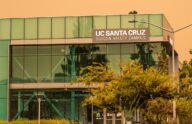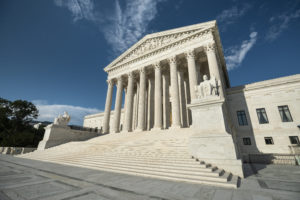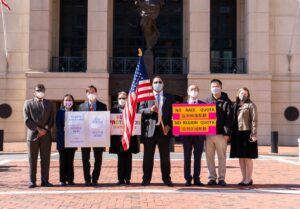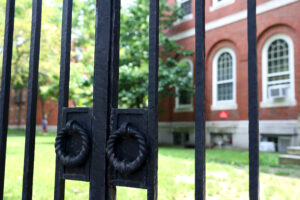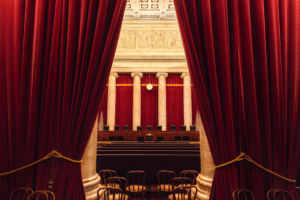Discourse: Racial Balance Is Not a Worthwhile Goal for Public Schools
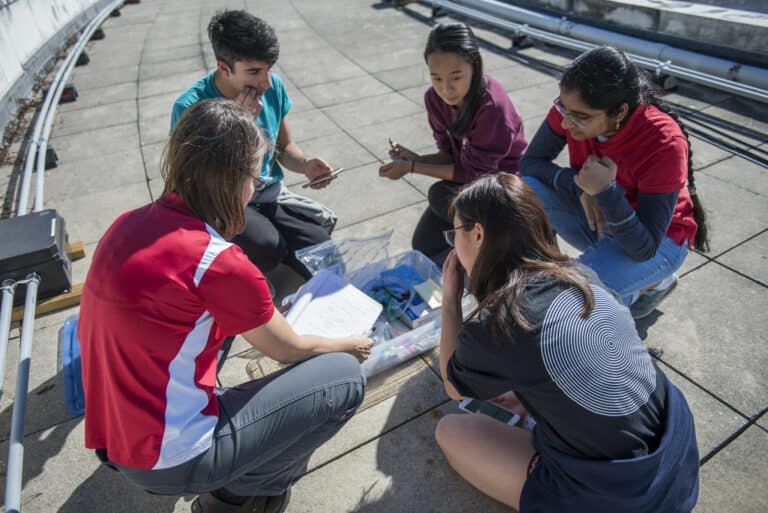
At Thomas Jefferson High School in Fairfax, Virginia, it no longer matters that one of the eighth graders applying for admission this fall has been building robots in his garage since he was 10, or that another won her middle school’s Math Olympiad last year and dreams of working for NASA someday. All that matters is they’re Asian American, and TJ, as the school is fondly known, believes it already has too many kids like them.
At least, that’s the effect of the school’s new admissions process, adopted two years ago with the explicit goal of reducing that share of the student body made up of Asian American kids. Policies like this create an unfair and unconstitutional hurdle for many talented students—who all deserve to be judged on their skills and hard work, not their skin color.
Not the Answer
The nation’s public schools are more diverse than ever, but, according to a recent Government Accountability Office report, those schools are often still divided along racial, ethnic and economic lines: During the 2020-2021 school year, more than one-third of public school children attended schools where at least 75% of students are of the same race or ethnicity.
That statistic might suggest flashbacks to last century, when children of different races were often forbidden from attending the same schools. But unlike the Jim Crow era, today’s divisions aren’t caused by laws requiring racially segregated schools. Instead, especially as families choose neighborhood schools over long cross-town bus rides, housing patterns have the largest influence on the racial demographics of public schools. If a neighborhood is primarily Latino, then its neighborhood school is likely to share that makeup.
The biggest issue on school administrators’ plates is not what causes racially isolated schools, but what—if anything—to do about them. It’s a difficult question, but one thing is clear: Racial balancing is not the answer.
Racial balancing is when someone in power, like a school board or city council, manipulates admissions policies to ensure that the racial demographics of a school or group mirror those of the community. It often crops up in admissions for specialized or magnet schools, where there are numerous applicants competing for a limited number of seats.
Thomas Jefferson High School is the nation’s top-ranked public high school and a coveted opportunity for aspiring scientists, engineers, doctors and researchers who work hard to earn a spot at the school. But the Fairfax County, Virginia, school board wanted the racial demographics of students at TJ to reflect the racial demographics of the school district as a whole.
To achieve that goal, it engaged in racial balancing by overhauling the admissions criteria for that high school so that Asian American students, who were “overrepresented” relative to the district as a whole, had a harder time getting in. Or put another way, the school board violated the equal protection clause of the Constitution by discriminating against Asian American students because of their skin color.
Sure, sometimes balance is worth striving for. Work-life balance is good. So is eating a balanced diet. But at Thomas Jefferson High School, achieving racial balance meant something very ugly had to happen: Those in power stopped seeing people as unique individuals—with individual likes, dislikes, talents and skills—and instead saw only their race.
Are you a 15-year-old soccer star who is also brilliant at math and science, terrible at crosswords and plays the tuba? Well, if school administrators are trying to racially balance your high school, the only thing that matters about you is that you’re Asian American. And if the STEM high school you’re applying to is 75% Asian American but your school district as a whole is only 40% Asian American, then racial balancing means you can’t compete on a level playing field simply because your skin is the wrong color.
Judging People by Race: Still Wrong … but Still Going On
Judging a person solely by their race is no less wrong today than it was during Jim Crow. The reason hasn’t changed: Everyone is created equal. To address the failings of past eras to live up to this American ideal, the Fourteenth Amendment to the Constitution promises equality before the law. That means the government, from the president right down to your local school board, can’t hand out benefits or impose burdens on people based on their race or ethnicity. Segregation-era laws prohibiting Black and white children from attending the same schools are obvious examples of Fourteenth Amendment violations in which a law burdens a person solely because of his or her race, but there are many less obvious laws that are discriminatory too.
For instance, in 1886 the Supreme Court struck down a San Francisco law making it illegal to operate a laundry in a wooden building without a permit. Although the law itself said nothing about race whatsoever, the overwhelming majority of laundries operating in wooden buildings at that time were owned by Chinese immigrants. Out of 200 applications by Chinese laundry owners, only one was granted a permit from the city, effectively preventing Chinese laundry owners from earning a living because of their race. This covert, discrimination-by-proxy law violated the Fourteenth Amendment.
Instead of San Francisco laundries, today’s battlegrounds for proxy discrimination are competitive public high schools like Thomas Jefferson High School. Until two years ago, admission to TJ was primarily through a race-blind, standardized admissions test. But in 2020, TJ fell victim to racial balancing, when its principal told students and their families that the already multicultural TJ needed to “reflect the racial composition” of the school district. In case that wasn’t clear enough, she went on to do the math, laying out exactly how many Black and Hispanic students TJ should have if it were racially balanced. TJ’s racial makeup, which at the time was 79% non-white and 21% white, just wasn’t cutting it. The message was clear: TJ had too many Asians Americans.
So the school board overhauled the TJ admissions policy, using proxy discrimination to target Asian American students and make it harder for them to gain admission relative to other racial groups. They were wildly successful: In the first year after the admissions policy change, Asian American students went from comprising 73% of the incoming freshman class to making up just 54%, even though the size of the freshman class expanded by 64 seats. Similarly, in the following year, Asian American students earned just 60% of offers to the class of 2026. It was, as one parent put it, a surgical strike on Asian American kids.
This targeted racial discrimination may sound familiar. Two lawsuits argued at the Supreme Court this term show how far universities are willing to go to protect their ability to choose students based on race instead of individual skills and accomplishments. Unlike K-12 schools like TJ, universities are allowed to consider an applicant’s race as a plus factor in admissions. But as the challengers in the Supreme Court lawsuits against Harvard and the University of North Carolina argue, race is often the deciding factor between equally qualified applicants. As one expert testified, an Asian American male with a 25% chance of admission to Harvard would increase his chances to 95% if he could just check the “African American” box on his application instead.
While schools like Harvard and UNC claim to look for all kinds of diversity, their campuses tell a very different story. Apart from race, Harvard is practically a monoculture. Its students are overwhelmingly wealthy, Christian or atheist/agnostic and liberal—only 9% of incoming freshman identify as conservative. At UNC, the average student comes from a family earning $100,000 more than the average North Carolina family—hardly a reflection of the community it serves. It’s clear that when these schools claim to value diversity, what they really mean is the kind of diversity that’s on display in brochures and websites showing students with a variety of skin colors. Achieving that visual diversity means an applicant’s skin color matters more than her grades, life experience, public service, work ethic and grit. If the Supreme Court rules that universities can no longer consider race in admissions decisions, universities will find themselves in much the same position as schools like TJ—and with the same temptation to use proxy discrimination with all its repugnant implications. We can only hope that they resist that temptation or that the courts crack down on the practice in cases like TJ.
What Should We Do?
What should schools do instead? Literally anything that evaluates children as individuals, not members of a racial or ethnic group. School officials should create opportunities for all students to compete on a level playing field, not erect barriers to keep certain racial groups out. Improving struggling neighborhood schools can help ensure a diverse pipeline of students prepared to compete for an opportunity like TJ. Universal screening, multilingual outreach, free test prep, eliminating application fees and administering admissions tests during the school day instead of on weekends are all strategies that increase access to all students, whatever their background.
These solutions take time, money and political will—things that are often in short supply among school administrators. It’s much easier to just manipulate an admissions policy to achieve racial balance. But behind each admissions policy are real children—unique individuals with their own talents, needs and abilities—and the Constitution’s promise of equality before the law applies to them too.
This op-ed was originally published at Discourse on December 22, 2022.


